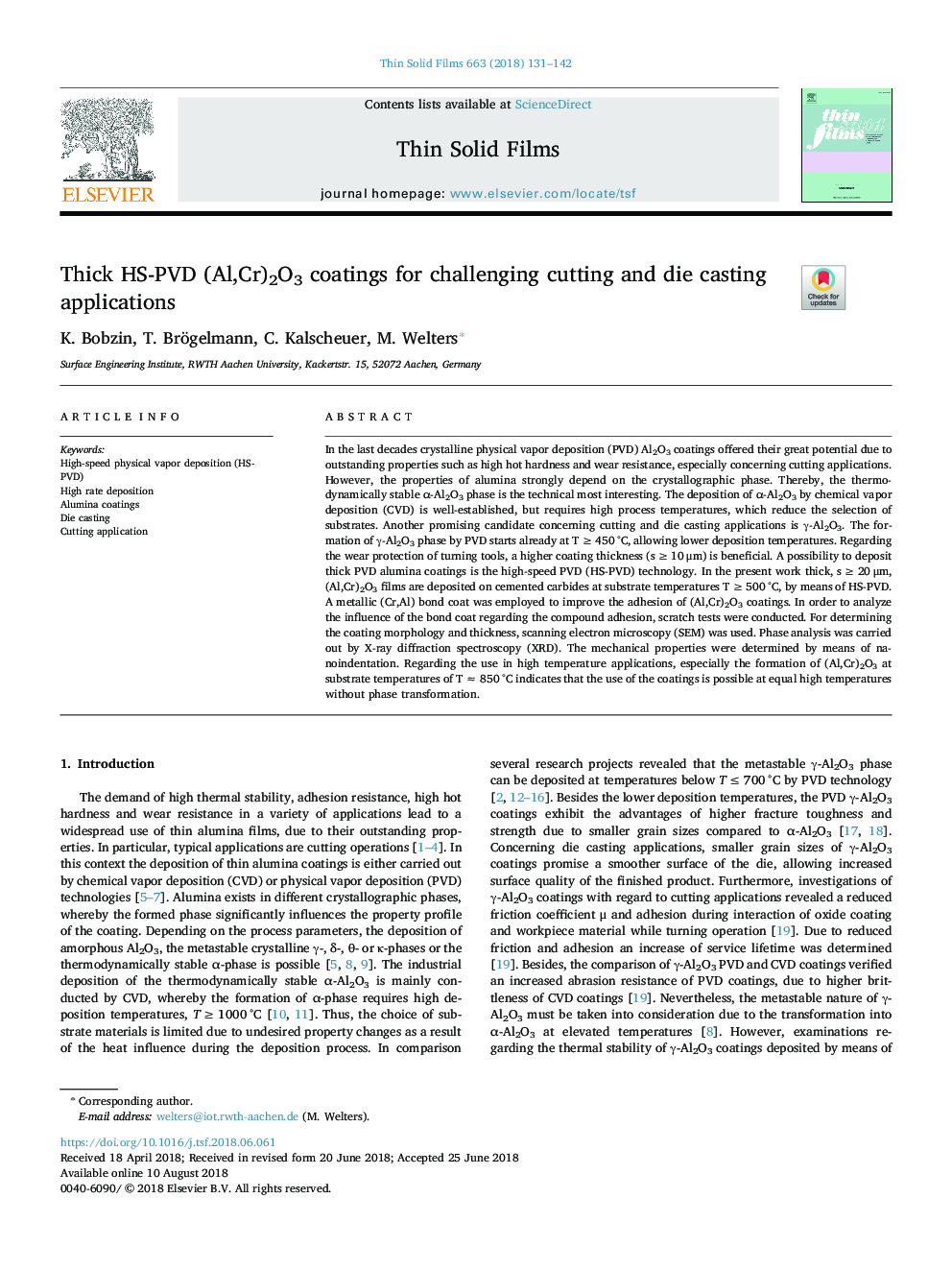| کد مقاله | کد نشریه | سال انتشار | مقاله انگلیسی | نسخه تمام متن |
|---|---|---|---|---|
| 11007114 | 1517949 | 2018 | 12 صفحه PDF | دانلود رایگان |
عنوان انگلیسی مقاله ISI
Thick HS-PVD (Al,Cr)2O3 coatings for challenging cutting and die casting applications
دانلود مقاله + سفارش ترجمه
دانلود مقاله ISI انگلیسی
رایگان برای ایرانیان
کلمات کلیدی
موضوعات مرتبط
مهندسی و علوم پایه
مهندسی مواد
فناوری نانو (نانو تکنولوژی)
پیش نمایش صفحه اول مقاله

چکیده انگلیسی
In the last decades crystalline physical vapor deposition (PVD) Al2O3 coatings offered their great potential due to outstanding properties such as high hot hardness and wear resistance, especially concerning cutting applications. However, the properties of alumina strongly depend on the crystallographic phase. Thereby, the thermodynamically stable α-Al2O3 phase is the technical most interesting. The deposition of α-Al2O3 by chemical vapor deposition (CVD) is well-established, but requires high process temperatures, which reduce the selection of substrates. Another promising candidate concerning cutting and die casting applications is γ-Al2O3. The formation of γ-Al2O3 phase by PVD starts already at Tâ¯â¥â¯450â¯Â°C, allowing lower deposition temperatures. Regarding the wear protection of turning tools, a higher coating thickness (sâ¯â¥â¯10â¯Î¼m) is beneficial. A possibility to deposit thick PVD alumina coatings is the high-speed PVD (HS-PVD) technology. In the present work thick, sâ¯â¥â¯20â¯Î¼m, (Al,Cr)2O3 films are deposited on cemented carbides at substrate temperatures Tâ¯â¥â¯500â¯Â°C, by means of HS-PVD. A metallic (Cr,Al) bond coat was employed to improve the adhesion of (Al,Cr)2O3 coatings. In order to analyze the influence of the bond coat regarding the compound adhesion, scratch tests were conducted. For determining the coating morphology and thickness, scanning electron microscopy (SEM) was used. Phase analysis was carried out by X-ray diffraction spectroscopy (XRD). The mechanical properties were determined by means of nanoindentation. Regarding the use in high temperature applications, especially the formation of (Al,Cr)2O3 at substrate temperatures of T â 850â¯Â°C indicates that the use of the coatings is possible at equal high temperatures without phase transformation.
ناشر
Database: Elsevier - ScienceDirect (ساینس دایرکت)
Journal: Thin Solid Films - Volume 663, 1 October 2018, Pages 131-142
Journal: Thin Solid Films - Volume 663, 1 October 2018, Pages 131-142
نویسندگان
K. Bobzin, T. Brögelmann, C. Kalscheuer, M. Welters,